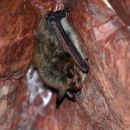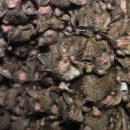The information herein provides researchers with options and methods for collecting DNA samples from live bats for which visual species identification may be unreliable and a more definitive method is necessary. These recommendations are intended to mitigate impacts to individual bats, especially federally listed Myotis septentrionalis, and to ensure proper sample collection so that handling facilitates receive viable DNA samples for laboratory analysis.
Publication date
Media Usage Rights/License
Public Domain
Program
Species
FWS Focus
FWS Focus
FWS Focus





